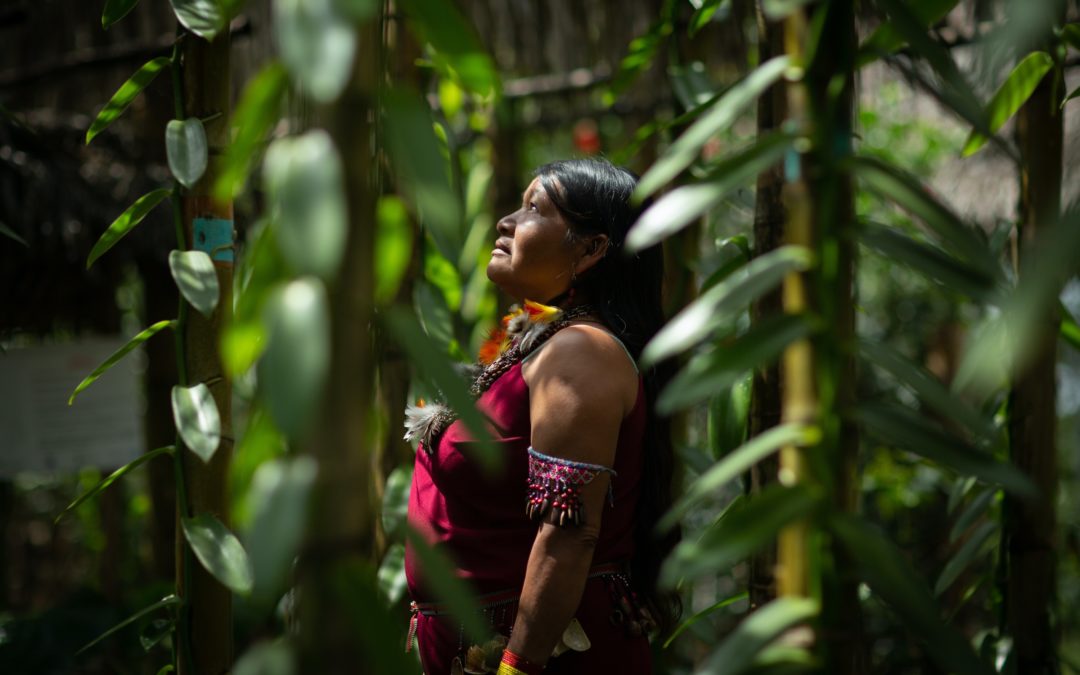
Editor’s note: News about conservation and the environment is made every day, but some of it can fly under the radar. In a recurring feature, Conservation News shares three stories from the past week that you should know about.
1. How to decolonize conservation
Learning from ancient Indigenous knowledge can help protect nature and people.
As an example, the authors highlight the Wuikinuxv’s strategy for managing salmon, which considers the entire ecosystem — including grizzly bears, one of the fish’s top predators.
“Like many First Nations in British Columbia living in grizzly bear habitat, the Wuikinuxv consider grizzlies to be close relatives, which is one reason they look out for them,” Gies writes. “But they also understand that ensuring bears get enough salmon means less human-bear conflict. It also means that there will be enough salmon for marine predators such as killer whales, which take their cut before the fish swim upstream to spawn. Plus, grizzlies with enough salmon will carry the fish into the forest where their remains feed other species and, ultimately, decay and fertilize the trees.”
The big picture: Gies writes that North American conservation originated in the idea that people exploit natural resources. “The model assumes that humans damage nature,” she adds. “Preserving land, therefore, means regulating people or fencing them out… But not all societies exploit nature in this way.”
At least a quarter of Earth’s land is traditionally owned or managed. And studies have shown that forests stewarded by Indigenous and local communities see less deforestation than protected forests. Yet these communities, which are closest to nature and most impacted by environmental destruction, often struggle for recognition and financial resources when it comes to conservation.
“Indigenous peoples have centuries’ worth of traditional knowledge to contribute to the fight to stop climate change and biodiversity loss, yet there are still very few of us in positions of power throughout the environmental movement,” Minnie Degawan, director of Conservation International’s Indigenous and Traditional Peoples Program, told Conservation News. “Until Indigenous peoples have a seat at the table when it comes to how their lands are used or managed, we will continue to be subjected to racism or left out of crucial conversations that could affect land and marine resources around the world.”
FURTHER READING:
Proposal seeks to protect cultural heritage sites and buffer the local economies from climate-driven shocks.
The story: New Zealand’s government last week released a sweeping “National Adaptation Plan” that aims to prepare for future climate disasters, writes Tess McClure for The Guardian.
The country faces a major challenge in how to adapt its coastal cities to the risks of rising seas and flood waters. One in seven New Zealanders — about 675,000 people — live in flood prone areas, with an additional 72,000 people living in areas that are projected to experience “extreme sea-level rise,” according to the government’s report.
Changes presented for public consultation include “updating the building code to make sure new builds account for climate hazards, ensuring the country’s public housing stock is built away from hazards, creating incentives for development away from high-risk areas and making it compulsory to disclose information about climate risks to prospective buyers and builders,” McClure writes.
The big picture: The catastrophic impacts of climate change may soon outpace humanity’s ability to adapt to it, according to a recent report from the United Nations’ Intergovernmental Panel on Climate Change. While the report stresses the critical importance of cutting emissions to slow climate change, it also recognizes that some impacts are already “irreversible” — from rising sea levels to widespread wildfires.
Incremental measures — such as building sea walls or early weather monitoring systems — are no longer going to cut it, according to the UN report. Instead, countries must implement transformative changes, which will shift where and how people build homes, grow food, produce energy and conserve nature.
FURTHER READING:
Report says changes are needed to support food security, biodiversity and climate.
The story: A new UN report finds that up to 40 percent of Earth’s land has been degraded — meaning it is less fertile, stores less carbon and is able to support fewer species, writes the BBC’s Matt McGrath. These impacts affect about half the world’s population. And if no action is taken, additional swaths of land the size of South America could be degraded by 2050.
The main culprit is modern agriculture: Globally, food systems are responsible for 80 percent of deforestation, 70 percent of freshwater use and are the single largest cause of terrestrial biodiversity loss, according to the Global Land Outlook.
The big picture: According to the report, more than US$ 700 billion is paid in annual agricultural subsidies, but only 15 percent of that has a positive impact on natural capital, biodiversity or livelihoods.
“Repurposing about a third of this money would allow governments to restore 1 billion degraded hectares [2.5 billion acres] by 2030, an area the size of the United States,” McGrath writes.
The report also points to a wide range of restoration efforts that can help stop the cycle of degradation. Planting trees, managing grazing more effectively and conserving watersheds are just a few of the regenerative practices that can protect lands, curb climate change and boost crop yields in many developing countries.
If you’d like to read the original source of this article please click here Visit Source

